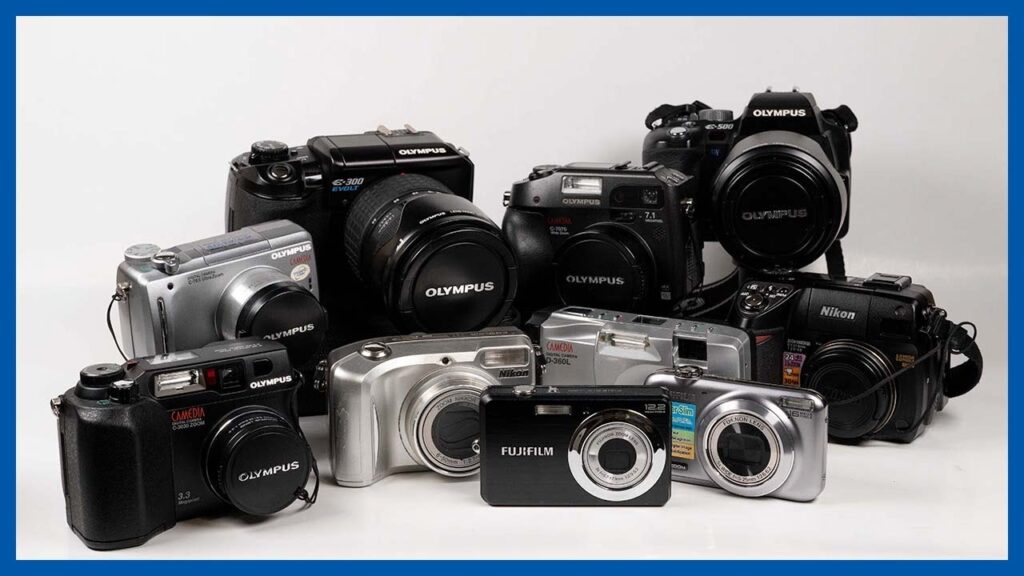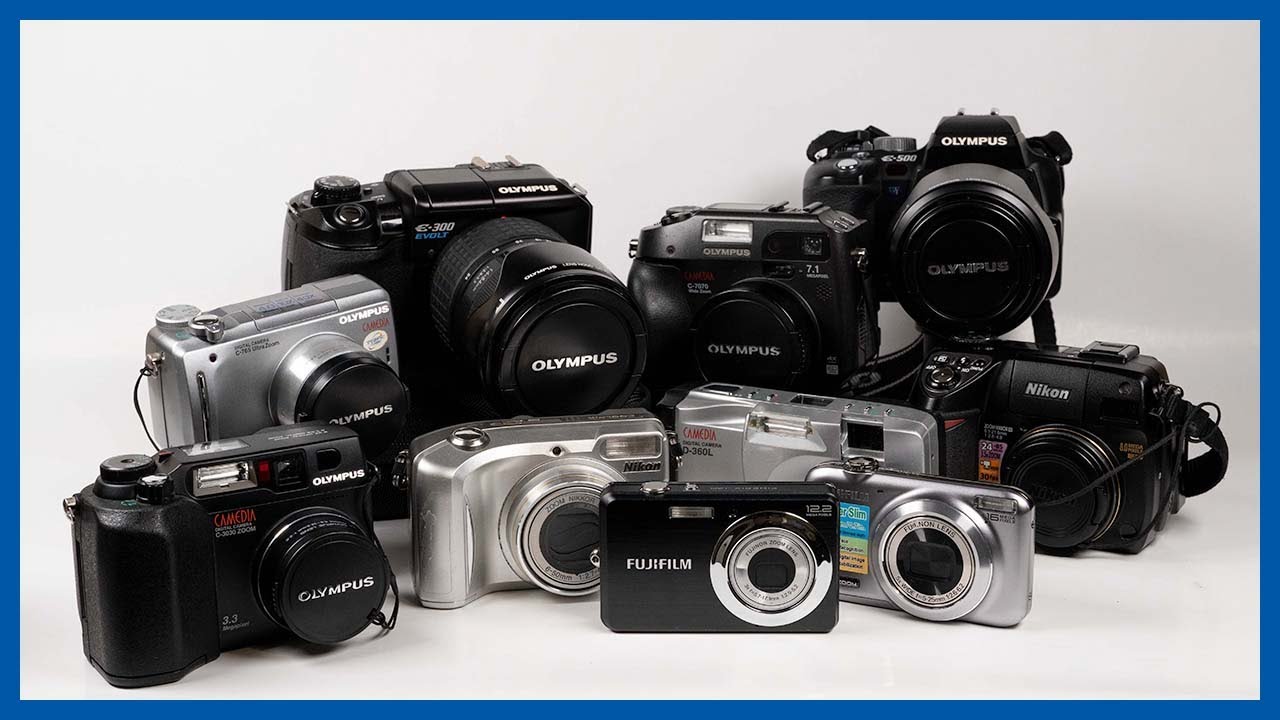Are you in the market for a digicam but feeling overwhelmed by the options? Look no further! This guide will provide you with practical tips and insights from an avid digicam enthusiast, Colton Matocha.
Whether you’re after a compact point-and-shoot for casual snaps or a DSLR-style camera for more advanced photography, this guide covers it all. From identifying what a digicam actually is to finding the best places to purchase one, you’re in great hands. Happy camera hunting!
What is a Digicam?
Definition and Overview
A digicam, short for digital camera, is a type of camera that captures photographs in digital format. Unlike traditional film cameras, digicams use electronic sensors to capture and store images, which can then be easily transferred to a computer or other digital devices. Digicams range from compact point-and-shoot models that easily fit into your pocket, to more complex DSLR-style cameras with interchangeable lenses and advanced features.
Brief History of Digicams
Digicams started to gain popularity in the late 1990s and early 2000s, offering a new and exciting way to capture and share photographs. The technology evolved rapidly, with improvements in sensor quality, storage capacity, and user interface. One of the standout features of early digicams was the CCD (Charge-Coupled Device) sensor, which provided superior color accuracy and a more film-like quality to images compared to earlier digital sensors.
Advantages of Digicams
There are several advantages to using digicams:
- Instant Preview: You can view photos immediately on the LCD screen.
- Adjustable Settings: Easily switch between various modes and settings to get the perfect shot.
- Convenience: Digital photos are easier to share via email, social media, or cloud storage.
- Freedom from Film: No need to buy and develop film, which makes photography more affordable in the long run.
Types of Digicams
Point-and-Shoot
Point-and-shoot digicams are compact and user-friendly. They are designed for casual photographers and aim to simplify the process of taking photos. These cameras usually feature automatic settings for exposure, focus, and flash, making them perfect for spontaneous snapshots and travel photography.
DSLR-Style Digicams
DSLR-style digicams are more advanced, with features resembling those of digital single-lens reflex cameras (DSLRs). They often have larger sensors, manual controls, and the option for interchangeable lenses. These cameras cater to serious photographers who want more control over their shots and superior image quality.
Comparison Between Types
While point-and-shoot digicams are perfect for convenience and portability, DSLR-style digicams offer more flexibility and higher quality images. Your choice will depend on what features are most important to you. If you need something easy and quick for daily use, a point-and-shoot might be ideal. However, if you’re looking to delve deeper into photography with more creative control, a DSLR-style digicam would be better suited to your needs.

This image is property of i.ytimg.com.
Finding a Digicam
Searching at Home
The best place to start looking for a digicam is at home. You might find an old camera tucked away in a drawer or bookshelf. Ask your family and friends if they have any unused digicams they could give you. Often, people have these cameras lying around and would be happy to see them put to good use.
Garage Sales and Estate Sales
Garage sales and estate sales are treasure troves for discovering vintage tech, including digicams. Usually, you can find them at affordable prices, and sometimes you might even hit the jackpot with a well-maintained, high-quality camera. Additionally, buying in person gives you the advantage of testing the camera before making a purchase.
Thrift Stores
Thrift stores are another excellent place to find digicams. Inventory can vary significantly from store to store, so it’s worth checking multiple locations. The prices are typically low, and you may find some hidden gems.
Online Marketplaces (Facebook, Craigslist)
Online marketplaces like Facebook and Craigslist are convenient platforms for finding digicams locally. These platforms allow you to see pictures, ask questions, and sometimes negotiate the price. You may also get the chance to meet the seller in person and test the camera before committing.
eBay and Depop
If local options don’t yield results, eBay and Depop offer an extensive range of digicams for sale. These platforms can be slightly more expensive due to shipping costs and higher demand, but they offer a larger selection and the likelihood of finding exactly what you’re looking for. Always check the seller’s reviews and return policy before purchasing.
Checking Functionality
Verifying Camera Operation
Before making a purchase, the first thing you need to check is whether the camera operates properly. Power it on and navigate through the menu settings to ensure everything is functional. If shopping online, read the description carefully and don’t hesitate to ask the seller for more information.
Testing Shutter and Flash
The shutter and flash are essential components. Test the shutter by taking multiple pictures to ensure it clicks and captures images without delay. Flash is crucial for low-light situations, so make sure it fires properly and consistently.
Inspecting LCD and Controls
The LCD screen is your window into the camera’s settings and the photos you’ve taken, so make sure it’s free from cracks and displays images clearly. Test all the control buttons, dials, and joysticks to ensure they respond correctly.

Batteries and Chargers
Importance of Battery and Charger
Batteries are the lifeblood of your digicam, and having a compatible charger is crucial. Ensure that the camera you’re buying includes a battery and charger, as finding replacements for older models can be challenging and costly.
Types of Batteries Used
Digicams use various types of batteries, ranging from proprietary lithium-ion cells to standard AA batteries. Proprietary batteries often offer better performance but might be harder to replace. AA batteries are convenient as they are widely available.
Availability of Batteries and Chargers
Before finalizing your purchase, verify the availability of batteries and chargers for that specific model. Proprietary batteries and chargers for older cameras may be harder to find and more expensive, so it’s essential to consider future replacements.
Storage Media
Different Types of Media Cards
Digicams from the late ’90s and early 2000s used various types of media cards for storing pictures. Unlike today’s ubiquitous SD cards, these older cameras could use formats that are now obsolete or hard to find.
Compact Flash and XD Picture Cards
Compact Flash (CF) cards and XD Picture Cards were common storage media in early digicams. CF cards are still relatively available, but XD Picture Cards have become rarer and more expensive.
Sony Memory Sticks and Floppy Disks
Some digicams used Sony Memory Sticks, which may still be found in electronics stores or online. Surprisingly, a few early models even used floppy disks! These are collector items now but can be fun to experiment with if you find one.
Costs and Availability
Verify the type of storage media your prospective digicam uses and check their costs and availability. Some older media cards can be pricey, turning a seemingly great deal on a camera into an expensive endeavor. Always budget for these additional costs.
Megapixels: How Important Are They?
Understanding Megapixels
Megapixels (MP) measure the resolution of a camera’s sensor. Higher megapixels generally mean more detailed images, but more isn’t always better. The overall image quality is influenced by sensor size, lens quality, and image processing algorithms.
Recommended Megapixel Range
For digicams from the late ’90s and early 2000s, a 5 to 10-megapixel range is optimal. This range offers a good balance between file size and image quality, suitable for printing at standard sizes and sharing online.
Impact on Image Quality
While higher megapixel counts can provide more detail, they aren’t the sole factor in image quality. CCD sensors, lens sharpness, and even how the camera handles noise in low-light conditions all contribute. For most casual uses, staying within the recommended range will suffice.
Price Considerations
Budget Friendly Options
Digicams can vary widely in price. Set a budget based on your needs and stick to it. There are plenty of affordable options that still offer a great photographic experience.
Cost of Accessories
Include the cost of necessary accessories in your budget. Items like memory cards, batteries, chargers, and camera cases can add up. Factor these costs to avoid spending more than planned.
Resale Value
Consider the potential resale value of the digicam. Well-maintained and popular models hold their value better. This can be an advantage if you decide to upgrade or change cameras later.
Online vs. In-Person Purchases
Advantages of In-Person Buys
Buying a digicam in person allows you to inspect and test the camera before purchasing. You can verify its condition, functionality, and even negotiate the price, reducing the risk of unexpected issues.
Benefits of Online Shopping
Online shopping provides a broader selection and often better prices due to the competitive nature of e-commerce. You can easily compare different models and find exactly what you’re looking for without geographic limitations.
Return Policies and Guarantees
When buying online, make sure to check the return policies and guarantees offered by the seller. Platforms like eBay and Amazon often provide buyer protection, which can be invaluable if you encounter any issues with your purchase.
Conclusion
Recap of Key Points
In summary, starting your search for a digicam at home can be fruitful and cost-effective. Explore local options like garage sales, estate sales, and thrift stores for potential deals. If needed, expand your search to online marketplaces where you have more choices, but remember to verify functionality, battery and charger availability, and storage media compatibility.
Final Tips and Recommendations
Prioritize cameras that come with batteries and chargers, as replacements can be hard to find. Check the type of storage media the camera uses and ensure it’s accessible and within your budget. Don’t get overly focused on megapixels; instead, look for a camera within the 5 to 10-megapixel range that meets your needs.
Encouragement to Enjoy Photography
Above all, remember that photography is meant to be fun and creative. Don’t stress too much about finding the perfect digicam. Experiment with different models, enjoy the quirks and unique features of each, and most importantly, have fun capturing moments. Happy shooting!

